|
Know what’s happening across Oceania—before your coffee’s cold.
OCEANIA MARKETS
|
|
|
|
|
|
ASX 200 and NZX 50 Data Provided By:

|
|
*Market index data sourced from official exchange publications and financial data aggregators. ASX and NZX data reflect end-of-day figures from the Australian and New Zealand stock exchanges respectively. SPX (South Pacific Stock Exchange) figures reflect the most recent published data.
|
|
REGIONAL NEWS
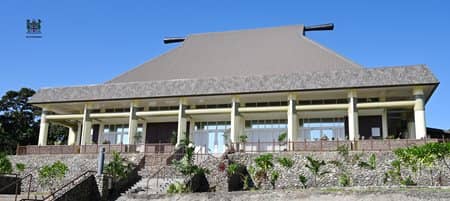
The newly restored Vale ni Bose, the iconic meeting house of Fiji’s Great Council of Chiefs, officially reopened in May 2025 after the 2019 fire. Photo Credit: Fiji Government Website
Fiji Reopens Great Council of Chiefs Building After 2019 Fire, Marking a Cultural Revival
|
After nearly six years of restoration following a devastating fire in 2019, Fiji has officially reopened the Vale ni Bose, the iconic meeting house of the Great Council of Chiefs (GCC). The reopening ceremony, held at the complex’s original site in Nasova, Suva, was presided over by Na Marama Bale na Roko Tui Dreketi, Ro Teimumu Kepa, a paramount chief and prominent advocate for iTaukei cultural heritage.
|
A Symbol of iTaukei Identity and Leadership
|
The Vale ni Bose is more than just a building; it is deeply embedded in the cultural fabric and identity of the indigenous iTaukei people. Ro Teimumu Kepa described the reopening as a “profound and symbolic moment” that revives the traditional apex of the vanua—the heart of Fijian culture and governance. She reflected on the 2019 fire, which was caused by a lit mosquito coil and destroyed the previous complex, calling it a symbolic event linked to the GCC’s disbandment in 2012 under the former military regime.
|
|
The Vale ni Bose is more than just a building; it is deeply embedded in the cultural fabric and identity of the indigenous iTaukei people. Ro Teimumu Kepa described the reopening as a “profound and symbolic moment” that revives the traditional apex of the vanua—the heart of Fijian culture and governance. She reflected on the 2019 fire, which was caused by a lit mosquito coil and destroyed the previous complex, calling it a symbolic event linked to the GCC’s disbandment in 2012 under the former military regime.
|
Restoration and Modernization
|
The redevelopment project, led by the iTaukei Trust Fund Board (TTFB), began in January 2024 with an initial $6.5 million in insurance funds. The restoration blends traditional Fijian architectural elements with modern features, including upgraded audio-visual systems to support governance and cultural meetings.
|
|
The adjacent GCC Talanoa Lounge was also renovated and had a soft reopening earlier in 2025. The entire complex is envisioned as more than a meeting venue; it will serve as a platform for leadership training, intergenerational dialogue, and cultural preservation. Plans are underway to adorn the interior with traditional artifacts from Fiji’s 14 provinces and Rotuma, enriching the site’s historical and cultural significance.
|
Reviving Traditional Leadership Amid Contemporary Challenges
|
The reopening coincides with the GCC’s first meeting at the new complex, bringing together 45 delegates from across Fiji’s provinces and Rotuma. The council’s agenda includes addressing pressing social issues disproportionately affecting the iTaukei community, such as drug abuse, HIV/AIDS, violence, mental health, teenage pregnancies, and homelessness.
|
|
Ro Teimumu emphasized the need for the GCC to develop robust policies and training programs to equip chiefs with the skills necessary to tackle these challenges, noting a 16-year leadership gap since the council’s disbandment.
|
A Renewed Chapter for Fiji’s Cultural Governance
|
GCC Chairman Ratu Viliame Seruvakula highlighted the Vale ni Bose as a restoration of a space “deeply rooted in the fabric of our identity as iTaukei and as Fijians.” The reopening marks a renewed commitment to supporting indigenous institutions, safeguarding cultural heritage, and investing in spaces that promote unity, leadership, and development.
|
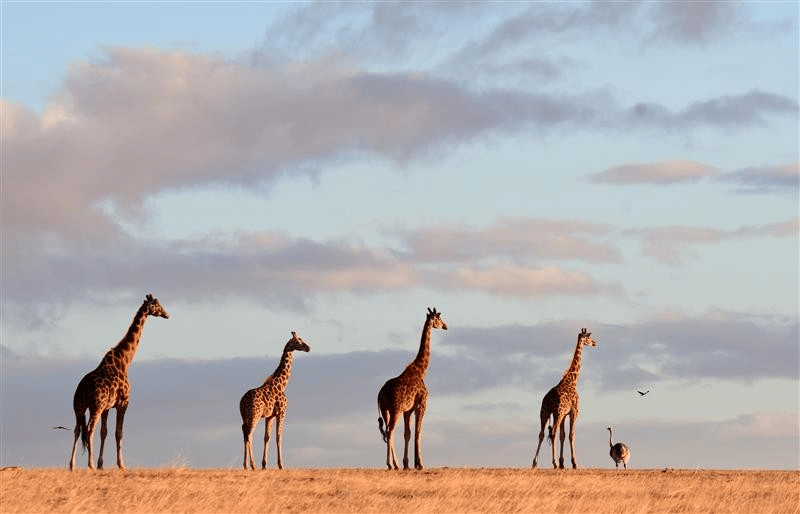
Wake up to giraffes and lions outside your window at Monarto Safari Park’s new $40 million luxury resort. Photo Credit: Monarto Safari Park
Experience the Wild in Style: Monarto Safari Resort Opens Its Doors
|
Monarto Safari Park, already renowned as the largest open-range safari experience outside Africa, has just raised the bar for wildlife adventures in Australia. The much-anticipated Monarto Safari Resort—a $40 million luxury development—officially welcomes its first guests, offering an unparalleled blend of immersive wildlife encounters and world-class accommodation just an hour from Adelaide.
|
A New Era of Safari Luxury
|
The Monarto Safari Resort is not just a place to stay—it's a destination that puts you at the heart of the action. With 78 hotel guest rooms and 20 luxury safari tents, guests can wake up to sweeping views of the Mallee Plains and the Wild Africa precinct, where giraffes, rhinos, zebras, lions, and cheetahs roam just metres away. The resort’s design ensures that whether you’re lounging by one of the two swimming pools or relaxing in the onsite day spa, you’re never far from the sights and sounds of the savannah.
|
|
What truly sets Monarto apart is the access it provides to some of the world’s most iconic and endangered species. Guests can join exclusive after-hours tours like the Sunset Wildlife Safari, a 2.5-hour guided adventure aboard a safari truck, complete with drinks and canapés as you watch herds of African animals in the golden light of dusk. Daytime experiences include the hop-on, hop-off Zu-Loop bus, behind-the-scenes animal encounters, and the highly recommended Lion 360 and lion feeding experiences that bring you closer to the park’s impressive pride.
|
For Everyone: Families, Couples, and Adventurers
|
The resort caters to all types of travelers—families, couples, and solo adventurers alike. Spacious rooms, a children’s playground, and accessible facilities ensure comfort for all ages and abilities. For those seeking tranquility, the day spa offers a retreat with a vitality pool, sauna, and cold plunge, all set against the backdrop of the wild.
|
|
Dining is a highlight, with a restaurant and bar serving up local flavors and stunning views. The resort is also equipped for business events, conferences, and even weddings, making it one of the most unique venues in Australia.
|
|
Every stay at Monarto Safari Resort supports conservation. A portion of each booking is donated to Monarto Safari Park’s vital programs, directly contributing to the preservation of endangered species and the park’s ongoing mission.
|
|
Early visitors rave about the authenticity of the safari experience, the knowledgeable guides, and the thrill of seeing animals in vast, naturalistic habitats. The park’s commitment to accessibility, sustainability, and guest comfort has set a new benchmark for wildlife tourism in Australia.
|
“It’s as close to a real safari as you can get in Australia… The guides were lovely, and the animals were a highlight. Highly recommended!”
— Recent visitor review
|
PRESENTED BY VONU STUDIOS
Oceanian Animated Videos For Kids: Pawpaw Kids TV
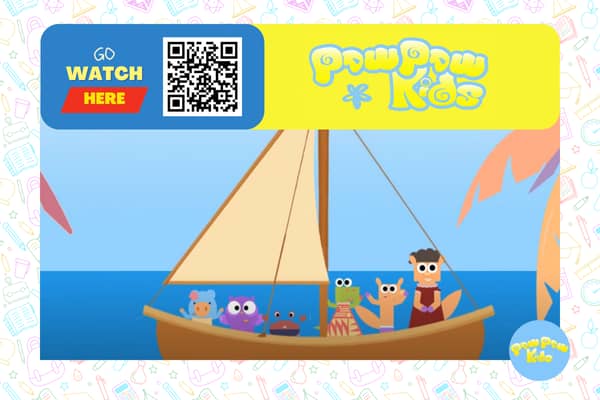
|
Pawpaw Kids TV is a YouTube channel dedicated to engaging and educational content for children, with a specific focus on the Oceanian region. The channel features the Pawpaw Explorers—Illy the Iguana, Mo the Mongoose, and other animated characters—who embark on adventures that introduce young viewers to local wildlife, ocean currents, and cultural stories.
|
Pawpaw Kids TV offers a Pacific blend of entertainment and learning, making it a valuable resource for children to explore the rich cultures and natural wonders of the Oceania region. Simply scan the QR code to visit the Pawpaw Kids TV YouTube channel or click this link:
YouTube Link: Pawpaw Kids TV
|
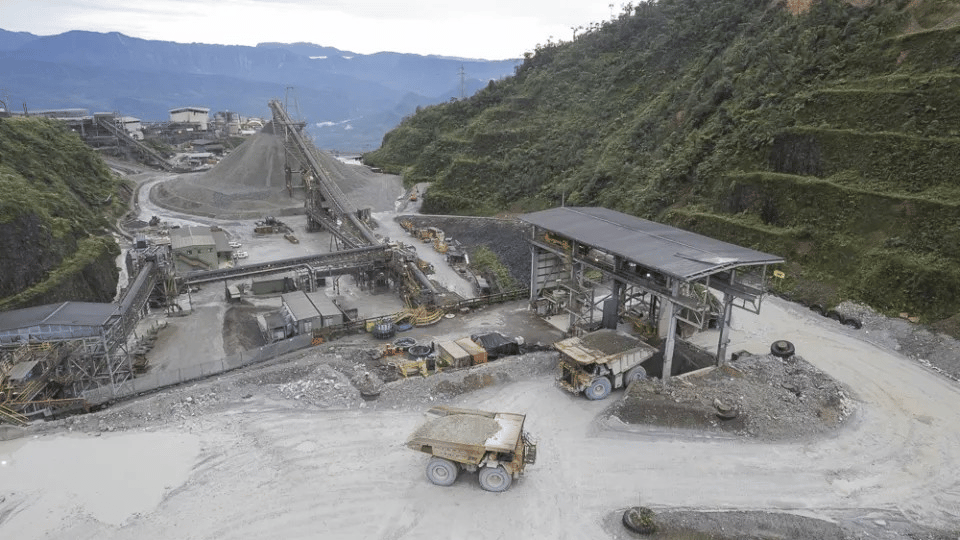
Ok Tedi Mining Limited has acquired the Misima Gold and Silver Project in Milne Bay Province, Papua New Guinea, marking a significant step in expanding the country’s mining sector and delivering renewed economic opportunities for local communities. Photo credit: OK Tedi Mining Limited
Ok Tedi Mining Acquires Misima Gold and Silver Project, Marking a New Era for PNG’s Mining Sector
|
In a landmark move signaling renewed momentum in Papua New Guinea’s mining industry, Ok Tedi Mining Limited (OTML) has finalized a binding agreement to acquire the Misima Gold and Silver Project from Kingston Resources Limited. The acquisition represents a significant step for Ok Tedi as it transitions into a multi-mine operator and aims to bolster the nation’s economic growth.
|
Details of the Acquisition
|
The initial purchase price for the Misima project is approximately AUD 60 million (PGK 158.5 million), with an additional contingent payment of AUD 35 million (PGK 92.4 million) based on future project milestones. This strategic investment underscores OTML’s confidence in the long-term potential of Papua New Guinea’s mineral sector and its commitment to expanding its operational footprint.
|
|
Located in Milne Bay Province, the Misima Gold and Silver Project boasts a current mineral resource estimate of 3.8 million ounces of gold and 22.1 million ounces of silver. The site is not new to mining; it was previously operated as an open-pit mine by Placer Dome Incorporated from 1989 to 2004, producing 3.7 million ounces of gold over its 15-year operational history.
|
Strategic Significance for Ok Tedi and PNG
|
Mark Stone, Chairman of Ok Tedi Mining, highlighted the acquisition as a pivotal moment for both the company and the country. “This transaction marks PNG’s resurgence in the mining sector, and the move to a multi-mine business is a significant step for Ok Tedi,” Stone stated. He emphasized that the deal reinforces OTML’s commitment to harnessing the region’s mineral assets, capitalizing on government support, and contributing to the nation’s Vision 2050—a strategic plan aimed at empowering people and creating wealth for Papua New Guinea.
|
Economic and Community Impact
|
The acquisition is expected to generate substantial economic benefits for Papua New Guinea, including job creation, infrastructure development, and increased export revenues. OTML’s operational expertise and established track record in sustainable mining practices are anticipated to bring renewed vigor to the Misima project, ensuring that local communities and the broader national economy benefit from the mine’s revitalization.
|
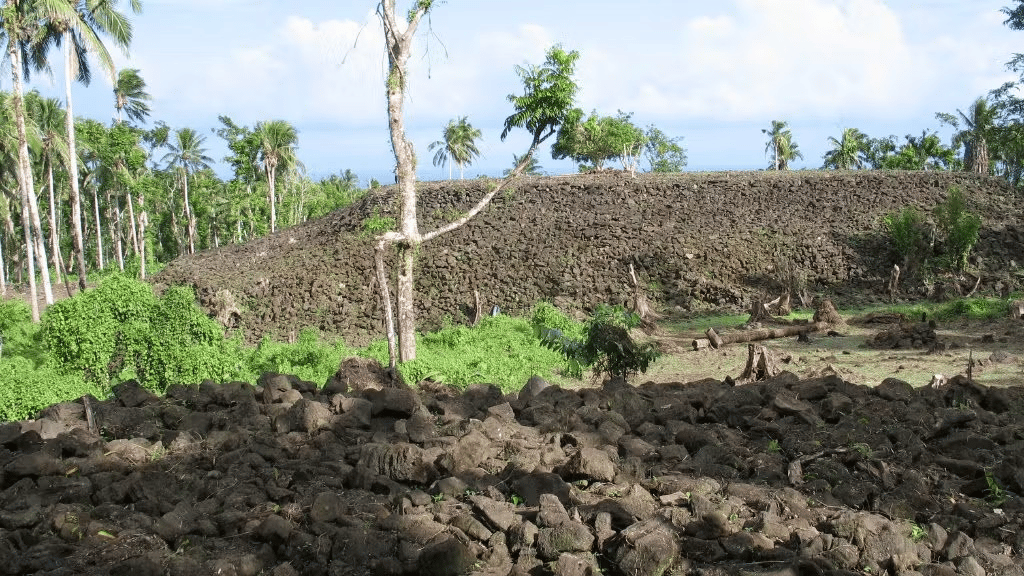
The Pulemelei Mound, the largest and oldest ancient stone structure in Polynesia, stands 12 meters high and spans 65 by 60 meters on Savai’i island, Samoa. This enigmatic pyramid-shaped monument, built between 1100 and 1400 AD, remains a significant cultural and archaeological landmark offering panoramic views of the surrounding landscape. Photo credit: WMF
Samoa’s Ancient Stone Monuments Unveiled Through Technology and Tradition
|
Samoa is home to hundreds of prehistoric stone mounds—known locally as tia ma’a—that stand as enduring testaments to the archipelago’s rich cultural and historical heritage. Recent advances in technology combined with traditional knowledge are shedding new light on these enigmatic structures, helping Samoans and the wider world better understand their origins, purpose, and significance.
|
The Magnitude and Mystery of Samoa’s Megaliths
|
Among the most impressive of these megaliths is the Pōtini Tia mound at Sa’anapu, Upolu. Estimated to be around 800 years old, this structure rises 11.5 meters high and spans 17 meters wide, built from approximately 30,000 cubic meters of basalt stones and earth. The sheer scale of the construction, achieved by hand, highlights the remarkable manpower and ingenuity of Samoa’s ancestors.
|
|
Another iconic site is the Pulemelei mound on Savai’i, one of the largest and oldest pyramid-like stone structures in Polynesia. Its rectangular form aligns precisely with the cardinal points—north, south, east, and west—adding to the intrigue surrounding its original function. Local oral traditions suggest spiritual uses, such as rituals involving conch shell blowing to guide wandering spirits to the underworld, underscoring the deep cultural significance of these monuments.
|
From Pigeon-Snaring to Spiritual Portals
|
Many Samoan elders refer to these mounds as “pigeon-snaring mounds” (tia suelupe), based on the traditional practice of catching pigeons atop the platforms. However, researchers like Galumalemana Steven Percival, director of the Tiapapata Art Centre, believe this may have been a secondary use. He suggests that early Christian missionaries may have suppressed indigenous religious knowledge linked to the mounds, causing much of the original meaning to be lost or forgotten.
|
Harnessing Modern Technology to Preserve Heritage
|
The Living Monuments project, supported by the ACP-EU Programme for cultural sustainability in the Pacific, is pioneering the use of drones, laser scanning, and geo-spatial mapping to digitally document these sites. High-resolution 3D models have been created, such as the one for the Pōtini Tia mound, which is now accessible through virtual and augmented reality platforms. This technology allows immersive experiences without disturbing the fragile sites, fostering greater appreciation and safeguarding them from unintended damage.
|
|
Workshops held at the Tiapapata Art Centre have trained local participants in remote sensing and digital heritage preservation, empowering communities to take active roles in protecting their cultural landmarks. The project also incorporates oral histories from custodians, blending scientific research with indigenous knowledge.
|
Educational and Tourism Potential
|
Opening access to sites like Pōtini Tia offers opportunities for heritage tourism, education, and further archaeological research. The Samoan government is preparing heritage protection legislation to formalize conservation efforts, recognizing these monuments as vital cultural treasures.
|
Broader Archaeological Context
|
Samoa’s megalithic sites are part of a wider archaeological landscape that includes stone tools such as the to‘i ma’a (stone adzes), once essential for woodworking and canoe building. These basalt tools, sourced from quarries like those on Tutuila Island, were traded across Polynesia, indicating extensive inter-island connections.. The Samoan government is preparing heritage protection legislation to formalize conservation efforts, recognizing these monuments as vital cultural treasures.
|
|
Archaeological databases like UTU (Sāmoa Archaeology and Cultural Heritage Database) are mapping hundreds of sites using GIS and LiDAR technologies, revealing new insights into population distribution, settlement patterns, and land use in prehistoric Samoa.
|
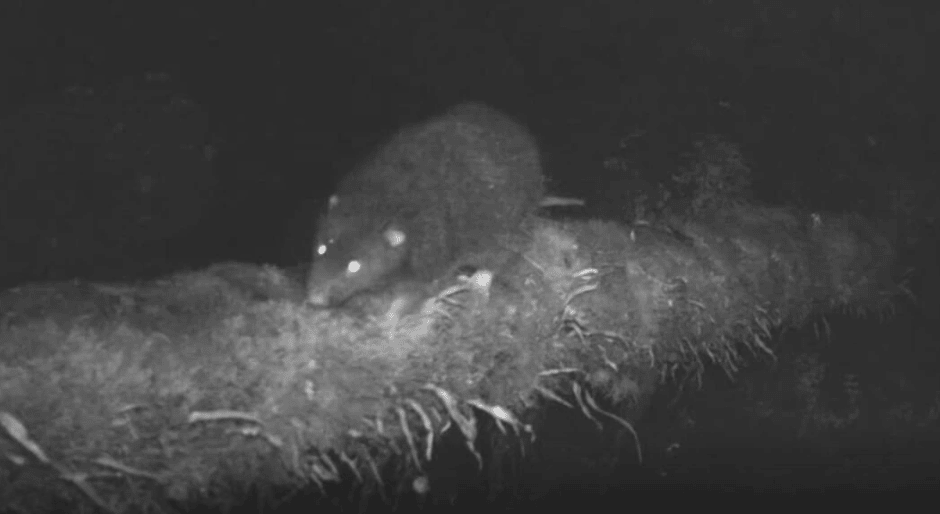
The elusive Vangunu giant rat (Uromys vika), native to the Solomon Islands, was captured on video for the first time ever, providing crucial insights to aid in the conservation of this critically endangered species. Photo credit: (Screengrab) Frantisek Vejmelka, Biology Centre CAS
Rare Giant Rat Captured on Video for the First Time: A Breakthrough for Conservation
|
In a remarkable breakthrough for wildlife researchers and conservationists, a rare species of giant rat has been captured on video for the first time ever. The footage, recorded deep in the forests of the Solomon Islands, is being hailed as a significant step forward in efforts to understand and protect one of the world’s most elusive rodents.
|
|
The animal, known as the Vangunu giant rat (Uromys vika), is native to Vangunu Island in the Solomon Islands. Weighing up to a kilogram and measuring up to 45 centimeters in length (not including the tail), the Vangunu giant rat is several times larger than the common black rat. Despite local legends and sporadic sightings, the species remained a mystery to science until it was first described in 2017, based on a single specimen.
|
|
Now, for the first time, researchers have managed to capture clear video footage of the animal in its natural habitat. The video shows the giant rat climbing trees and foraging, confirming its arboreal lifestyle and providing valuable insights into its behavior.
|
|
The Vangunu giant rat is listed as critically endangered, with its entire known population restricted to a shrinking patch of forest on Vangunu Island. The species is threatened by logging, habitat loss, and the encroachment of invasive species. Conservationists have long feared that the rat could become extinct before its habits and needs were fully understood.
|
|
The new footage is more than a scientific curiosity—it is a vital tool for raising awareness and supporting conservation efforts. By proving the animal’s continued existence and documenting its behavior, researchers hope to galvanize support for protecting the remaining forest habitat on Vangunu.
|
Local Knowledge and International Collaboration
|
Local communities have played a crucial role in the discovery and documentation of the Vangunu giant rat. For generations, villagers have told stories of the “vika,” describing its size, strength, and tree-dwelling habits. Scientists working with local guides were finally able to confirm these accounts, using camera traps and patient observation to capture the first-ever video evidence.
|
|
International conservation organizations, including the Australian Museum and the Solomon Islands government, have joined forces to study and protect the species. The footage will be used to educate both local residents and the global public about the importance of preserving the unique biodiversity of the Solomon Islands.
|
|
Dr. Tyrone Lavery, a mammalogist who helped describe the species, said, “This video is a game-changer. It shows the world that the Vangunu giant rat is real, alive, and in desperate need of protection. We hope this will inspire new efforts to save its habitat before it’s too late.”
|
Fiji Bets on Nuclear-Powered Ships to Drive Clean Energy Revolution
|
Fiji is poised to become a Pacific trailblazer by adopting micro modular nuclear reactor (MMR) technology aboard ships, aiming to deliver clean, reliable power to its islands and slash emissions—while neighboring Australia remains mired in debate over nuclear energy policy.
|
A Floating Solution for Island Energy Needs
|
The Fijian government, under Prime Minister Sitiveni Rabuka, has announced plans to install a U.S.-sourced MMR on the Ocean of Peace vessel. This 73-meter amphibious ship, developed in partnership with Deployable Energy (Houston, Texas), Seatransport (Queensland), and Lloyd’s Register (London), will serve as a mobile power station. By day, the vessel can patrol Fiji’s vast ocean territory; by night, it will dock at island communities, plug into local grids, and supply electricity to thousands of homes and facilities.
|
How Micro Modular Reactors Work
|
MMRs are compact nuclear reactors, 100 to 1,000 times smaller than conventional nuclear plants, with capacities ranging from 1 to 20 megawatts (MW). A single 20 MW unit could power about 16,500 average Western homes—potentially more in Fiji, where per-household consumption is lower.
|
|
The reactors use nuclear fission to generate heat, which is transferred via coolant (water or liquid metal) to a steam turbine that produces electricity. The core is heavily shielded to protect workers and the environment, and modern designs emphasize passive safety features. Notably, the MMRs planned for Fiji would not require refueling for up to ten years.
|
Strategic and Economic Impacts
-
Disaster Resilience: The Ocean of Peace and similar vessels can provide emergency power and rapid disaster response in remote areas.
-
Skills and Industry: Fiji is revitalizing its shipbuilding sector, with a new shipyard in Lautoka to train welders, electricians, and technicians, supporting local employment and technical expertise.
-
Regional Leadership: Fiji is the first Pacific nation to formally back MMR deployment, setting a precedent for other island states grappling with energy security and climate change.
|
Safety and Environmental Considerations
|
Modern MMRs incorporate advanced safety features, including self-propulsion and submersion capabilities in case of emergencies. Industry advocates argue that these technologies are far safer than legacy nuclear plants and are already in use in other parts of the world, such as West Africa.
|
|
However, nuclear energy remains a sensitive topic in the Pacific, given the region’s legacy of nuclear testing and ongoing concerns about radioactive contamination. The Pacific Islands Forum has repeatedly emphasized the need for stringent safety standards, regional consultation, and adherence to international treaties like the South Pacific Nuclear Free Zone Treaty (Treaty of Rarotonga). Fiji’s government has pledged that MMR adoption will proceed only if the technology meets strict cost, emission, and safety criteria.
|
Australia’s Contrasting Approach
|
While Fiji moves ahead, Australia continues to debate nuclear energy’s role in its transition to net zero. Critics argue that Australia’s current focus on renewables—solar, wind, and extensive transmission infrastructure—overlooks the potential benefits of small and micro nuclear reactors. Stuart Ballantyne, executive chair of Seatransport, contends that nuclear could offer more practical, cost-effective solutions for remote and industrial applications.
|
SPORTS
Brisbane’s Victoria Park Faces Major Transformation for 2032 Olympics
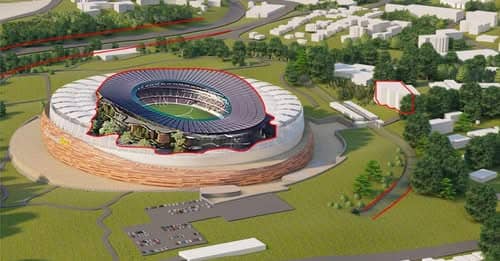
Nearly 60% of Victoria Park could be lost to Olympic infrastructure, contradicting earlier promises of a major new green space for Brisbane. Photo Credit: Facebook
|
Brisbane’s largest inner-city green space, Victoria Park, is at the heart of a growing controversy as the Queensland government pushes forward with plans to build a new 63,000-seat stadium for the 2032 Olympic and Paralympic Games. The proposal, which will see nearly 60% of the 64-hectare park overtaken by Olympic infrastructure, has sparked fierce debate over the city’s green future, heritage, and urban planning priorities.
|
|
Premier David Crisafulli announced the decision to build the stadium at Victoria Park in March, citing the inability to complete major works at the Gabba in time for the Games. The new venue will host the opening and closing ceremonies, athletics events, and post-Games, is expected to become Brisbane’s home for cricket and AFL.
|
|
However, critics argue the development comes at a steep cost: the loss of more than half of the city’s largest park, which was previously promised as a revitalized green space for all residents. Advocacy groups, such as Save Victoria Park, warn of irreversible damage to the city’s “green heart,” highlighting the park’s ecological, recreational, and cultural significance.
|
|
A central criticism of the project is the contrast between government-released artist impressions and the likely reality. Official visuals depict a stadium nestled gently among mature gum trees, suggesting minimal disruption. Yet, experts and community advocates say these images are misleading, omitting the vast construction zones, haul roads, retaining walls, and paved plazas required for a stadium of this scale.
|
“These images are not harmless representations of future imaginaries; they are political instruments that pre-empt dissent,” writes The Fifth Estate, highlighting the phenomenon of “Olympic bedazzlement”—where glossy renderings lull the public into passive acceptance while obscuring the true environmental and social impacts.
|
|
Victoria Park’s challenging topography presents significant engineering obstacles. The park’s hilly terrain and underlying Brisbane tuff (volcanic sandstone) would require extensive excavation and blasting, potentially disrupting nearby hospitals and residential areas. Critics argue that the site’s lack of existing transport and hospitality infrastructure makes it an impractical and expensive choice for a mega-event venue.
|
|
Furthermore, the decision appears to conflict with the International Olympic Committee’s own Host Contract requirements, which prioritize the use of previously developed or degraded land over greenfield sites like Victoria Park. Despite this, the Queensland government has introduced legislation to override 15 state planning laws, including environmental and heritage protections, to fast-track Olympic venue delivery.
|
Alternative Options and Community Response
|
Several alternative locations—such as Northshore Hamilton, Woolloongabba, Albion Park, Doomben, and Mayne Yard—have been identified as previously developed sites that would entail fewer environmental and cultural trade-offs. Many recent Olympic host cities have opted to reuse or upgrade existing venues, a path that could offer lower costs and a smaller carbon footprint.
|
|
Within Victoria Park itself, three potential stadium alignments are under consideration, each with varying impacts on the landscape and connectivity to transport. Some proposals suggest placing the stadium on flatter terrain at the park’s edge to preserve more green space, while others envision it closer to key infrastructure like the Exhibition Station.
|
SPOTLIGHT
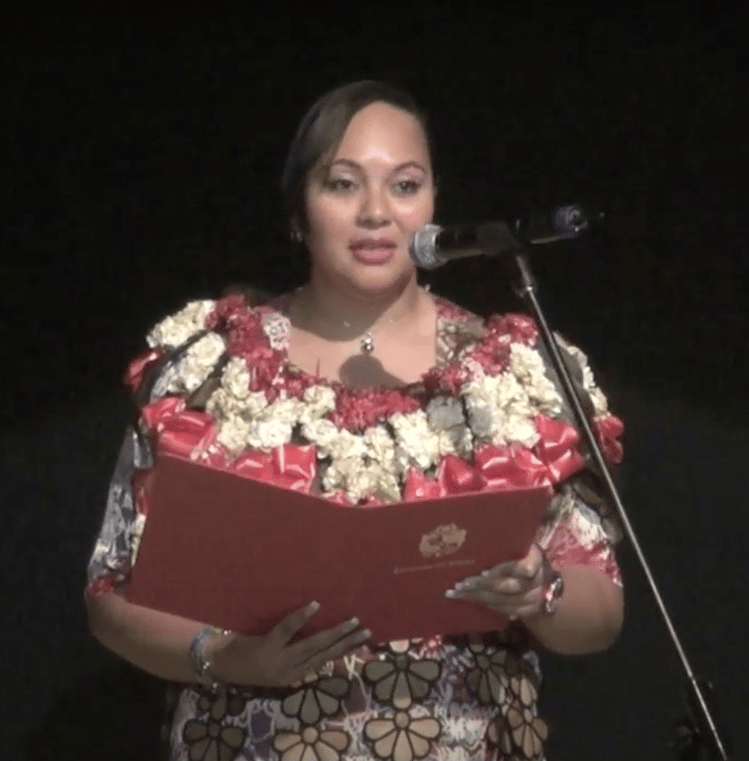
Princess Latufuipeka leads Tonga’s powerful call for whale rights and ocean protection at the UN One Ocean Science Congress, championing a bold new era of Pacific environmental leadership. Photo credit: Tonga Independent
Princess Latufuipeka Champions Whale Rights and Ocean Protection on the Global Stage
|
Tonga is making international waves in ocean advocacy, as Her Royal Highness Princess Angelika Lātūfuipeka leads a groundbreaking Pacific delegation at the UN One Ocean Science Congress (OOSC) in Nice, France, this June. Representing the Huelo Matamoana Trust, the Princess is elevating Tonga’s legacy of marine conservation and spearheading a bold new campaign for whale rights—placing Tonga at the forefront of global environmental leadership.
|
|
Tonga’s commitment to marine protection dates back to 1978, when King Tāufaʻāhau Tupou IV established one of the world’s first whale sanctuaries by banning all whale hunting in Tongan waters—a visionary move that predated the global commercial whaling ban. Princess Latufuipeka is now building on this legacy, championing legal personhood for whales and advancing innovative frameworks to protect sentient marine life.
|
The Pacific Voice at the UN One Ocean Science Congress
|
At the OOSC, Princess Latufuipeka is joined by representatives from the Moananui Sanctuary Trust and the Pacific Whale Fund of New Zealand. Together, they are calling for stronger global protections for whales and greater recognition of the Pacific’s central role in ocean conservation and climate action. The Princess’s keynote address at the Nice Opera House on June 5th will fuse art, science, and advocacy to influence key policymakers ahead of the upcoming United Nations Ocean Conference.
|
Launching the “I’m a Person Too” Campaign
|
In a defining moment for Tonga and the Pacific, Princess Latufuipeka will launch the “I’m a Person Too” campaign on World Oceans Day (June 8th). This global initiative calls for whales to be recognised as legal persons, with rights to life, culture, and protection from harm. The campaign, already backed by over 300,000 signatures on Avaaz, seeks to establish a transformative legal precedent, blending indigenous wisdom with modern environmental law.
|
What This Means for Tonga
-
Ecotourism Boost: Enhanced legal protections for whales will strengthen Tonga’s reputation as a world-class, ethical whale-watching destination, attracting more visitors and supporting local livelihoods.
-
Nature-Based Finance: Whale rights legislation opens access to sustainable investment and blue nature markets, funding climate resilience and community conservation.
-
Global Leadership: Princess Latufuipeka’s advocacy affirms Tonga’s status as a principled, solutions-driven voice for ocean justice on the world stage.
|
REGIONAL EVENTS
-
Right Here, Right Now Summit – Pacific Regional Session
-
Date: Thursday, 5 June 2025
-
Location: University of the South Pacific, Laucala Campus, Suva, Fiji
Join Pacific experts, students, and climate advocates at the University of the South Pacific for the regional session of the global Right Here, Right Now Summit. This event, part of a 24-hour worldwide plenary on World Environment Day, focuses on human rights-based climate action and climate justice in the Pacific. Discussions will highlight the region’s leadership in climate advocacy, including insights on the recent Advisory Opinion from The Hague. The session connects Fiji and the Pacific to a global movement advancing equitable and sustainable solutions to the climate crisis.
|
QUICK TAKES
-
Fijians are being targeted by a new scam circulating through iMessage and WhatsApp, falsely offering high-paying remote jobs linked to Bitcoin ATM installations in Suva and Lautoka. The Anti-Scam Taskforce and Consumer Council of Fiji urge everyone to ignore these messages, which promise unrealistic earnings for minimal work and are designed to steal personal information or money. Do not respond or add the sender on WhatsApp. If you receive such a message or have shared your information, contact the Consumer Council of Fiji immediately at toll-free 155 or complaints@consumersfiji.org. Stay vigilant—legitimate job offers will never ask for contact through unofficial channels or promise easy money.
-
Norfolk Island’s main emergency number, 000, has been down for over two weeks, causing serious safety concerns for locals and the 500 weekly visitors who may not know the alternative numbers for police, fire, or hospital services. While daily texts, radio announcements, and information at the airport and accommodations are helping to spread the word, community leaders warn this situation is “almost like an accident waiting to happen” and urge authorities to restore the service as soon as possible, highlighting broader issues with local governance since the loss of self-government in 2015.
-
Commonwealth of the Northern Mariana Islands (CNMI) businessman Jose “Joe” Ayuyu Sr., owner of McDonald’s Saipan and Guam, urges the Commonwealth to streamline permitting and embrace the U.S. military as an “anchor tenant” to stabilize its struggling economy, which is heavily reliant on tourism now in decline. He highlights leadership indecision, inefficient government processes, and the loss of international flights as key challenges, advocating for diversification through military partnerships and improved infrastructure to create a more resilient economic future.
|
Was this email forwarded to you? Sign up here:
|
|
